| | Disease context | Cucumber green mottle mosaic virus | Tomato spotted wilt virus | Alfalfa mosaic virus | Pepino mosaic virus | Tomato chlorotic dwarf viroid and potato spindle tuber viroid | Potyviruses | Greenhouse crop management recommendations
Some viruses and viroids are common pathogens of greenhouse crops while others are relatively rare. Despite the severe damage these pathogens can cause (to the point of total crop loss), they are generally overlooked or ignored unless obvious symptoms are visible on infected crops.
This factsheet offers an overview of emerging virus and viroid diseases that may potentially have serious economic consequences for the greenhouse industry in Alberta.
An in-depth knowledge of the prevention, transmission, hygiene, proper testing and susceptible hosts are all important components to consider when developing an effective virus management program.
Disease Context
The amount of damage and loss caused by virus and viroid diseases depends on several factors:
- virulence of the virus/viroid strains
- susceptibility of the crop varieties being grown
- timing and prevalence of infection
- abundance of vectors
- environmental conditions both inside and outside of greenhouses
However, asymptomatic plants may also be a reservoir of these pathogens. These plants can facilitate the transmission to susceptible hosts where severe symptoms can develop or even death may occur.
Cucumber Green Mottle Mosaic Virus
Cucumber green mottle mosaic virus (CGMMV) has a narrow host range. This range is primarily limited to cucurbit species, including watermelon, melon, cucumber, pumpkin, squash, gourds, etc.
The damage CGMMV causes to greenhouse cucumber crops can be extensive. Effects can result in substantial yield losses and a product with a comparatively low market value because of fruit abnormalities.
CGMMV can be easily spread across both short and long distances through the use of contaminated seeds or infected seedlings. It is also highly contagious and easily transmitted by various means:
- mechanically, such as on workers’ hands, footwear and clothing
- by contaminated tools, equipment, picking baskets, small equipment and the like
Disease symptoms usually appear 2 to 3 weeks after infection, and infected plants may show chlorotic mottling, leaf deformation, plant stunting and necrosis at later stages of growth (see Figure 1).
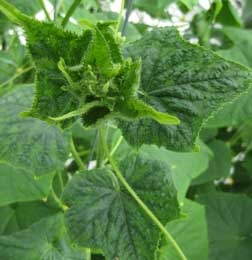 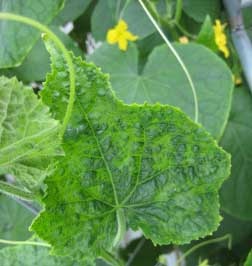
Figure 1. Typical CGMMV symptoms on greenhouse cucumber plants.
Tomato Spotted Wilt Virus
Tomato spotted wilt virus (TSWV) has caused crop losses in a wide variety of greenhouse-grown vegetable and ornamental plants across Canada and the United States. Tomato, pepper and gloxinia crops, in particular, have been devastated by spotted wilt.
TSWV is transmitted by several species of thrips. The virus can replicate in both the thrips vectors and the plant hosts. The spread of the virus can be rapid in greenhouses with high populations of western flower thrips, which is the most effective TSWV vector. Infected weeds and ornamental plants are generally the major reservoirs of the virus.
Some plants develop symptoms within 5 days of feeding by infected thrips. Infected plants may show stunting, necrotic and chlorotic spotting, stem cankers, line patterns and ring-spots (see Figure 2). Losses in crop production can range from a few per cent up to complete destruction.
 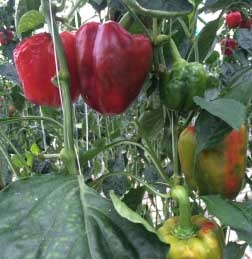
Figure 2. Typical TSWV symptoms on greenhouse pepper plants. Note the spotting and deformity of the infected fruits. TSWV-infected fruits cannot be sold.
Controlling this viral disease is difficult due to the genetic variability of both the virus and the vector populations combined with a wide diversity of susceptible hosts. These hosts encompass over 1,000 plant species, including greenhouse-grown vegetables and ornamentals.
Alfalfa Mosaic Virus
Alfalfa mosaic virus (AMV) has a very wide host range, including pepper, tomato, cucurbits and beans, potato, alfalfa, clover, tobacco and several other crops and weeds. It also has numerous aphid vectors.
Greenhouse crops are more prone to AMV infections when alfalfa is grown in close proximity to commercial greenhouses. AMV is transmitted by seed and aphids as well as mechanically, so multiple control measures should be adopted to prevent or delay the primary infection and the secondary spread of the virus in commercial greenhouses. These measures are necessary to keep crop damage under the economic threshold.
Typical AMV symptoms may vary but include white spots, wilting, leaf mosaic, dwarfing, malformation, ringspots and mottle to necrosis (see Figure 3). Heavy infections may force growers to terminate their crops early because of non-productiveness and, therefore, reduce the overall profitability of their operations.
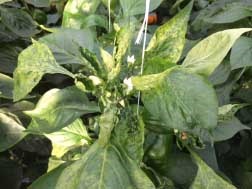 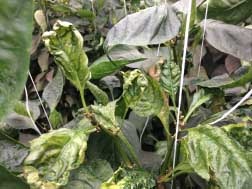
Figure 3. Typical AMV symptoms on greenhouse pepper plants. Note the spotting and deformity of the infected leaves.
Pepino Mosaic Virus
The natural host of the Pepino mosaic virus (PepMV) is tomato (Figure 4). Artificial inoculations have resulted in the infection of other crops, such as eggplant, cucumbers and potato, but the disease does not appear to spread systemically in those plants. Peppers have not yet been found to be susceptible to this virus.
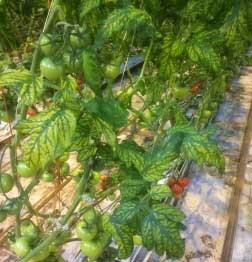 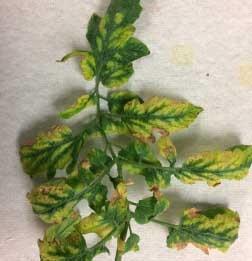
Figure 4. Typical PepMV symptoms on greenhouse tomato.
Symptoms are more readily seen during the fall and winter months when light levels and temperatures are lower. During the warmer, brighter months, older plants may harbour the virus without showing any symptoms.
Symptoms usually appear 2 to 3 weeks after infection, and affected plants often show stunting of the “head” (see Figure 4). Leaves around the “head” may show dark spots, while lower leaves may have brown, necrotic lesions that can resemble damage caused by water that has dripped onto the plant.
Tomato Chlorotic Dwarf Viroid and Potato Spindle Tuber Viroid
Tomato chlorotic dwarf viroid (TCDVd) and potato spindle tuber viroid (PSTVd) are two closely related viroids that can cause devastating damage to several greenhouse crops and can have regulatory effects.
Disease effect is high on tomato, moderate on pepper and low on eggplant crops. Ornamental plants, such as petunia and brugmansia, have been shown to be symptomless hosts of TCDVd/PSTVd and could, therefore, act as a source of inoculum for infections in greenhouse crops.
In general, TCDVd/PSTVd are known to be easily transmitted mechanically and can also be spread by contact with contaminated pruning tools, farm equipment, clothing, crop handing and contact between neighboring plants. Depending on the type of viroid and host plant, viroids can also be transmitted by seeds, vegetative propagation, pollen, grafting and insects.
Early symptoms appear as reduced growth and yellowing of leaves (chlorosis) in the young terminal parts of the plant 3 to 6 weeks after initial infection. Upon reaching maturity, the infected plants may become stunted with more pronounced chlorosis and leaves showing necrotic lesions, with the leaves sometimes also becoming brittle and distorted (see Figure 5).
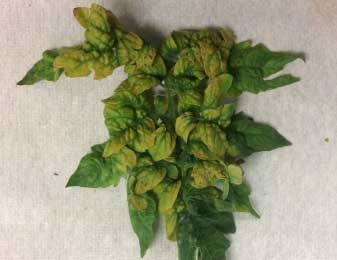 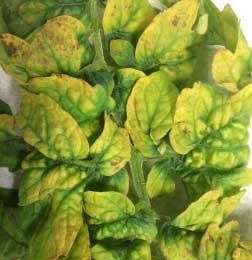
Figure 5. Typical TCDVd/PSTVd symptoms on greenhouse tomato plants.
Potyviruses
Potyviruses are the largest group of viral plant pathogens and can affect hundreds of crops.
Viruses within this group are transmitted through one or more of the following means:
- aphid vectors (particularly the green peach aphid)
- seed
- mechanical means
- grafting
- pollen
Potyviruses can have a significant influence on crop production including loss of yield, unmarketable product and regulatory effects. Since aphids are vectors, rigorous aphid control is essential to control potyviruses in greenhouse crops. Potyviruses can be spread in sap on fingers and tools during routine greenhouse procedures, so suspect plants should be rogued and buried.
Zucchini yellow mosaic virus (ZYMV) is an example of potyvirus that can infect greenhouse cucumber and cause severe mosaic, yellowing and distortion of the leaves and fruits (see Figure 6).
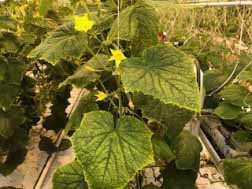 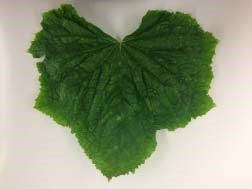
Figure 6. Typical ZYMV symptoms on greenhouse cucumber.
Greenhouse Crop Management Recommendations
Here are some important steps that can help manage virus and viroid diseases in greenhouse crops:
- Use virus/viroid-free seeds and transplants. Greenhouse growers should request that seed companies and plant propagators provide a copy of a test certificate showing freedom from viruses/viroids for their seed/seedling lots.
- Biosecurity and phytosanitary requirements must be strictly followed in and around greenhouse premises.
- Maintain strict hygiene practices, such as hand washing, foot dips and avoiding bringing green plant materials and food items into a greenhouse facility.
- Sticky cards should be used to monitor insect pests, and control measures should be started as soon as the crop is planted or earlier if possible.
- Practice periodic, rigorous scouting for virus and viroid-like symptoms during crop production: look for mosaic, ringspots, stunting, leaf deformation and irregular flower color or shape.
- Submit any suspected plant samples to the Crop Diversification Centre South Greenhouse Laboratory at Brooks for virus/viroid identification.
- A systematic weed control program must be practiced, and ornamental plants in and around greenhouses should be removed.
- Sterilize pruning tools before and after pruning each plant. A couple of pruners can be used alternatively, which will give sufficient time to disinfect a pruner.
- Control or minimize the movement of people and contact with or handling of plants.
- Remove plant debris and infected plants, including the root system and plant growth medium. Since viruses/viroids can persist in the root system of infected plants, do not re-use the planting bags or containers from the previous crop. Since viruses/viroids have a latent period of 3 to 6 weeks before any symptoms can be seen, symptomless plants surrounding the infected plant must also be destroyed.
- Carry out a thorough greenhouse clean up between crop cycles and at the year end.
Acknowledgement
The authors gratefully acknowledge Dr. Ron Howard for his careful review of this factsheet.
References
Cerkauskas, R. 2004. Alfalfa Mosaic Virus. AVRDC - The World Vegetable Center. Available from http://203.64.245.61/web_crops/pepper/AMV.pdf.
Ellouze, W., Dalpé, S., Howard, R.J., Ling, K.-S., and Zhang, W. 2015. Managing Cucumber Green Mottle Mosaic Virus in Alberta Greenhouses. Alberta Agriculture and Forestry [Agri-Facts: Practical Information for Alberta’s Agriculture Industry]. Available from http://www1.agric.gov.ab.ca/$department/deptdocs.nsf/all/agdex15624
Ferguson, G. 2001. Management of Pepino Mosaic Virus in Greenhouse Tomatoes. Ontario Ministry of Agriculture, Food and Rural Affairs. Available from http://www.omafra.gov.on.ca/english/crops/facts/01-017.htm.
Howard, R.J., Garland, J.A., and Seaman, W.L. 1994. Diseases and pests of vegetable crops in Canada. Canadian Phytopathological Society. 554p. pp. 554.
Sabaratnam, S. 2016. Tomato Chlorotic Dwarf Viroid on Greenhouse Tomatoes. British Columbia Ministry of Agriculture. Available from https://www2.gov.bc.ca/assets/gov/farming-natural-resources-and-industry/agriculture-and-seafood/animal-and-crops/plant-health/phu-tomatochlorotic-dwarfviroidss.pdf.
Zitter, T.A., and Daughtrey, M.L. 1989. Tomato Spotted Wilt Virus. Cornell University. Available from http://vegetablemdonline.ppath.cornell.edu/factsheets/Virus_SpottedWilt.htm.
Contact information
For more information or to submit suspected plant samples for diagnosis, please contact:
Dr. Oualid (Walid) Ellouz, Greenhouse Research Scientist
Alberta Agriculture and Forestry
Greenhouse Section
Crop Diversification Centre South,
301 Horticultural Station Road East,
Brooks, Alberta T1R 1E6
Office: 403-362-1328
Cell: 403-363-6780
Email: oualid.ellouz@gov.ab.ca
Factsheet prepared by
Walid Ellouze, Ph.D
Vachaspati Mishra, Ph.D
Alberta Agriculture and Forestry
Greenhouse Section, Crop Diversification Centre South Brooks, Alberta
More information
Alberta Ag-Info Centre
Call toll free 310-FARM (3276)
Website: agriculture.alberta.ca
Source: Agdex 200/630-1. April 2018. |
|